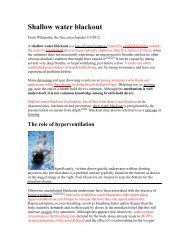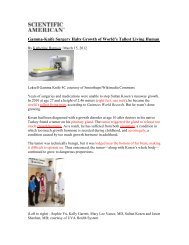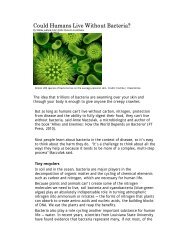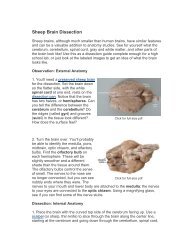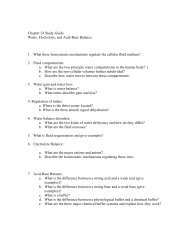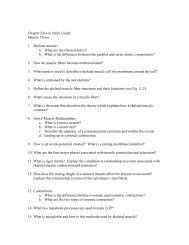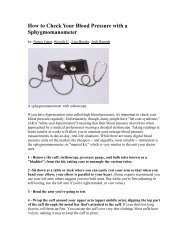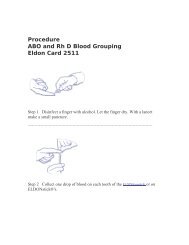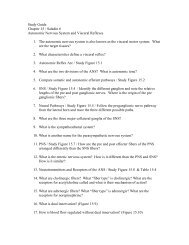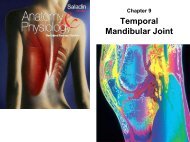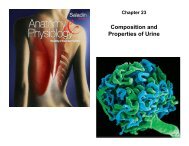Length Tension Relationship & Whole Muscle Behavior
Length Tension Relationship & Whole Muscle Behavior
Length Tension Relationship & Whole Muscle Behavior
- No tags were found...
Create successful ePaper yourself
Turn your PDF publications into a flip-book with our unique Google optimized e-Paper software.
Twitch Strength & Stimulus Frequency<br />
Copyright © The McGraw-Hill Companies, Inc. Permission required for reproduction or display.<br />
Treppe<br />
(b)<br />
• 10-20 stimuli per second produces treppe (staircase) phenomenon<br />
– muscle still recovers fully between twitches, but each twitch develops more<br />
tension than the one before<br />
– stimuli arrive so rapidly that the SR does not have time between stimuli to<br />
completely reabsorb all of the Ca +2 it released<br />
– Ca +2 concentration in the cytosol rises higher and higher with each<br />
stimulus causing subsequent twitches to be stronger<br />
– heat released by each twitch cause muscle enzymes such as myosin<br />
ATPase to work more efficiently and produce stronger twitches as muscle<br />
warms up



